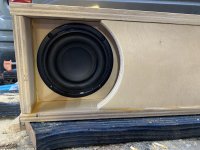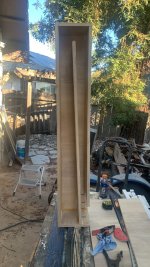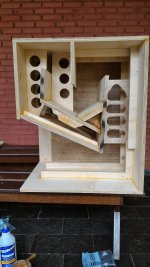Any peaks in the response curve above 100 Hz will amplify any harmonic distortion generated by the subwoofer operating below 100 Hz.Robot, why you care above 100Hz , a sub will only take over from 100 and below [snip]
As for their audibility, that's another matter for discussion
@BP1Fanatic
Is it possible you like low tuned, potentially group delayed notes that work well in hip hop bass beats but not so much for ‘audio files’ preferences?
Is it possible you like low tuned, potentially group delayed notes that work well in hip hop bass beats but not so much for ‘audio files’ preferences?
Eeek, um...not on purpose! 😆 I do plan to measure the driver in free air with the DATS though.Looks like you enabled the semi-inductance feature for the driver
It does look quite similar to Stoneeh's measurements, yes! Here it with no smoothing applied. Distortion does seem to rise as we approach 160hz but as @maxolini points out, its mostly crossed over by then when low passed (about 20db down from peak output by 160hz). I'm also not that confident my cheap USB sound card isn't introducing some distortion because REW sometimes tells me distortion is too high and i have to fiddle with the levels a bit. I probably should use my 2I2 instead.
Last edited:
You are not understanding. Delay is in Hip Hop music. WE sometimes call it "drag." It's a feature of the Roland TR-808 drum machine. I'm not a drummer. But if there is standard drum set for all musician, I would think they would only produce "1 note bass" unless you put a delay on the microphone picking up the kick drum. For you bass guitar players, listen to early Outkast. They used bass guitar in a lot of their tracks with A LOT of delay.@BP1Fanatic
Is it possible you like low tuned, potentially group delayed notes that work well in hip hop bass beats but not so much for ‘audio files’ preferences?
1 of my favorite bass guitar tracks is Too Short and Eric Sermon (of EPMD) "Buy You Some." That's DEFINITELY a subwoofer tester.
https://www.avid.com/resource-center/what-is-an-808
Is an 808 a kick or bass?
At first listen, the 808 blurs the distinction between a kick and a bass. So, which is it? In practice, the 808 is used in music as both a kick and a bass. By extending the decay, sustain, and release times of an 808 and aligning its pitch with your track's key, the 808 serves as both the kick drum and the bass line of a beat, enhancing both rhythmic energy and providing a robust low-end foundation in your music. In some instances, a kick drum and a bass sound are layered together to create the sound of an 808.Why is the 808 so popular?
The "808 sound" gained its popularity primarily due to the accessibility and affordability it offered through the Roland TR-808 drum machine. When it debuted in 1980, the TR-808 became a game-changer, providing an affordable and convenient alternative to hiring live drummers for recording drums. Its distinctive qualities, including the deep bass drum, snappy snares, and resonant hi-hats, made it an essential drum programming tool for beat makers and music producers. This sonic versatility allowed musicians to not only create beats but also craft melodic basslines, transcending genres. As a result, the "808 sound" became a cultural phenomenon, profoundly influencing music production across hip-hop, electronic, and pop genres, leaving a lasting mark on the industry.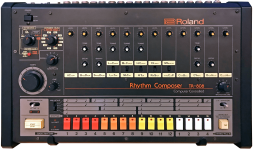

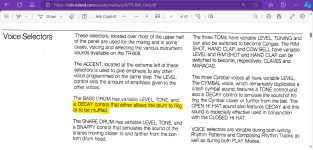
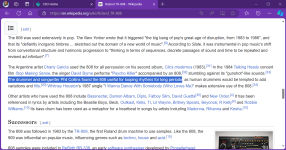
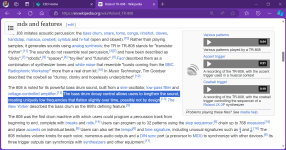
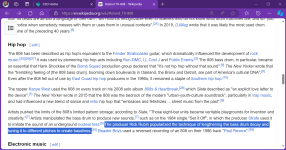
What's funny about Rick Rubin is another White guy taught a few famous Black Hip Hop producers how to use the E-mu SP-1200 sampler. He doesn't get enough credit in Hip Hop.
https://www.waxpoetics.com/article/large-professor-producers-producer/
https://en.wikipedia.org/wiki/Paul_C
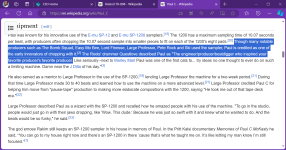
Last edited by a moderator:
I wonder what exactly is in a paraflex or devastator that makes the sound ‘unique’ other than the cone control and lack of xmax for output ?
i have the same driver in a variety of cabinets and the long 1/4 wave ones make strange noises (not just the actual resonaces), and it’s extremely annoying if an expanding path (which is what Brian is describing as the distortion/strange sounds you’re stuck with regardless of dsp/XO controlling the signals
i have the same driver in a variety of cabinets and the long 1/4 wave ones make strange noises (not just the actual resonaces), and it’s extremely annoying if an expanding path (which is what Brian is describing as the distortion/strange sounds you’re stuck with regardless of dsp/XO controlling the signals
Yes!! Its hard to overstate impact of the 808 on music post 1980. Egyptian Lover still melts minds (and probably voice coils) live with nothing more than a TR-808. It's difficult to find clips of him not being profane so bit of a language warning on that one!the "808 sound" became a cultural phenomenon
Last edited:
Paraflex is a BP6S or 1 exit output.I wonder what exactly is in a paraflex or devastator that makes the sound ‘unique’ other than the cone control and lack of xmax for output ?
i have the same driver in a variety of cabinets and the long 1/4 wave ones make strange noises (not just the actual resonaces), and it’s extremely annoying if an expanding path (which is what Brian is describing as the distortion/strange sounds you’re stuck with regardless of dsp/XO controlling the signals
Devastator is a BP6P or 2 exit outputs.
When a driver moves, it distorts.
Drivers tend to move less per a given voltage in bandpass enclosures.
Also, bandpass enclosures hide mechanical noises from the driver.
I know folks have measurements of sealed enclosures producing less distortion than a bandpass enclosure per a given voltage, but how much louder was the bandpass enclosure playing at that voltage???
If a sealed enclosure produced 1% THD & 90dB at 1 volt and a bandpass enclosure is 2% THD & 96dB at 1 volt, then what you think the bandpass enclosure THD will be at 90dB???
If The exit is in the same place or merged right before exit seems to make little difference. If running a microphone at Either exit or just outside where they’re merged kinda shows this (in my amateur, at best, attempts to figure out if there’s much of a difference between compound horn with ‘path‘ nearly zero verses paraflex with L45 nearly zero (Or slightly different versions of those.
maybe it’s because my resonator’s share a harmonic length interval (3:1) so there’s no phase discontinuity in that area??
what about weird time delays in tapped pipes with another resonator added further distancing, the driver and path lengths from the listening position ? Or the high freq resonance ringing/stored energy standing wave funk
maybe it’s because my resonator’s share a harmonic length interval (3:1) so there’s no phase discontinuity in that area??
what about weird time delays in tapped pipes with another resonator added further distancing, the driver and path lengths from the listening position ? Or the high freq resonance ringing/stored energy standing wave funk
Bit of a noob question but what's a good spot and a good technique for locating a speakon mount through to the back panel of the tham15 cabinet ? Ive unfortunately glued it all up now so I'll have to feed it through - do I need to worry about wires flapping around in the horn path? If I recall I've seen some placed up the top and some down low 🤷
Lightweight 12v power? I’m considering building some lightweight Tham 15s with 12mm ply and b&w 15DS100 drivers powered by a couple of 1-2kw car amps for off grid parties with my Scott Hinson MEH. I’ve scoured the forum but would appreciate thoughts:
1) are there any cone correction or other mods recommended
2) the tham 18 introduces a different fold with the front panel meeting at an angle with the top (or bottom depending on orientation) panel… should this be applied to the Tham 15?
3) any experiences with using 2 or 3 of these in a cardioid arrangement?
4) what’s the lowest f3 I can hope for? Would using the Tham 18 dimensions but narrower get me much lower?
5) anybody measured the 15DS100 to n the Tham 15 enclosure?
Portability and efficiency are important, but so is at least 40hz authority… any other considerations?
Kerry
1) are there any cone correction or other mods recommended
2) the tham 18 introduces a different fold with the front panel meeting at an angle with the top (or bottom depending on orientation) panel… should this be applied to the Tham 15?
3) any experiences with using 2 or 3 of these in a cardioid arrangement?
4) what’s the lowest f3 I can hope for? Would using the Tham 18 dimensions but narrower get me much lower?
5) anybody measured the 15DS100 to n the Tham 15 enclosure?
Portability and efficiency are important, but so is at least 40hz authority… any other considerations?
Kerry
Do you have the drivers already?
I'm asking cause there is one 12mm ply cut sheet with cabinet plan attached based on the SS15 for the 3015LF but with a PRV 15SW2000 it hits 40hz with ease.
Only thing is that the PRV is ferrite 28lbs vs the 3015LF 10lbs (neo magnet)
Here is the thread
https://www.diyaudio.com/community/...r-the-eminence-kappalite-3015lf.232784/page-5
The plans are on post#83
I can post the sims with the PRV 15SW2000
If you want em.
Freq wise I think the modded SS15 hits lower than the tham15
I'm asking cause there is one 12mm ply cut sheet with cabinet plan attached based on the SS15 for the 3015LF but with a PRV 15SW2000 it hits 40hz with ease.
Only thing is that the PRV is ferrite 28lbs vs the 3015LF 10lbs (neo magnet)
Here is the thread
https://www.diyaudio.com/community/...r-the-eminence-kappalite-3015lf.232784/page-5
The plans are on post#83
I can post the sims with the PRV 15SW2000
If you want em.
Freq wise I think the modded SS15 hits lower than the tham15
Last edited:
Remember , the 3015lf only can take about 300 watts to hit xmax in the SS15, so Jbell used 1/2 ply with almost no brasing, but if you go with a high power driver , let's say one than can take 1Kw you will need to use extensive brasing on the panels that flex most. There are around 3db power loss because panel flex if you don't reinforce the big panels.
Or use 3/4 ply and be more conservative about panel reinforcement ,on the original ss15 thread they talk about what panels flex most , if I remember correctly it was the front ,top and bottom , back? Can't remember.
Look at this example pic on brasing bottom , top and other panels
Or use 3/4 ply and be more conservative about panel reinforcement ,on the original ss15 thread they talk about what panels flex most , if I remember correctly it was the front ,top and bottom , back? Can't remember.
Look at this example pic on brasing bottom , top and other panels
Attachments
- Home
- Loudspeakers
- Subwoofers
- THAM15 - a compact 15" tapped horn
